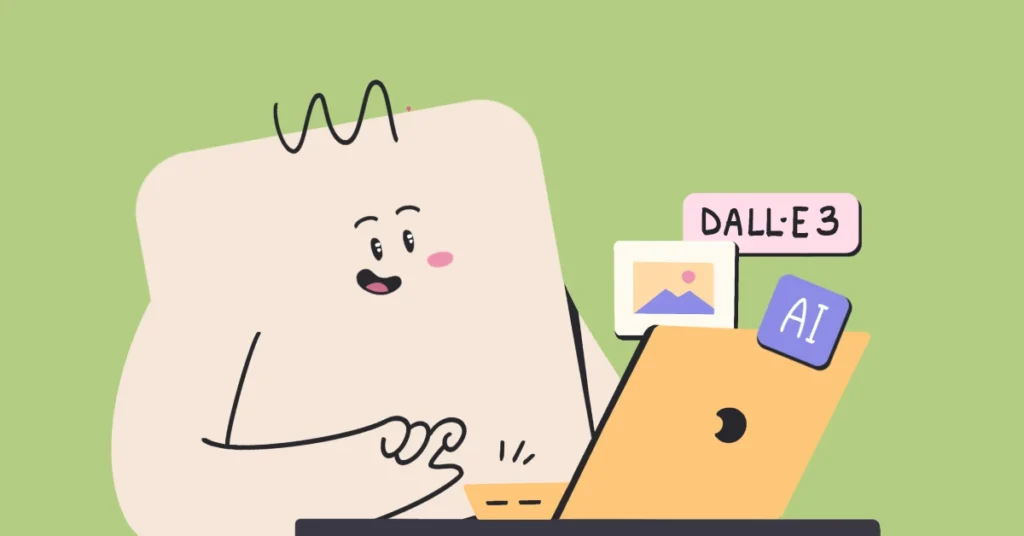How to use DALL·E 3 to Create AI images with ChatGPT
DALL·E 3 has become a revolutionary advancement in image generation technology in the field of artificial intelligence (AI), . The current version developed by OpenAI improves on previous iterations to generate increasingly complex, nuanced, and contextual images based on text descriptions. As the third in the DALL-E series, it marks a major advance in AI’s ability to grasp and visualize human language. DALL-E 3 is known for its extraordinary ability to generate extremely detailed and imaginative images that closely follow complex verbal cues, pushing the limits of AI-driven visual content production.
This new system uses powerful deep learning techniques and a large dataset of image-text pairs to understand and express visual concepts with remarkable precision and artistic flair. Its ability to understand abstract concepts, unique styles, and details opens up new possibilities in fields as diverse as digital art, advertising, product design, and entertainment. DALL-E 3’s advances in resolution, stylistic diversity, and fast follow make it an invaluable tool for professionals and creatives, with the potential to revolutionize the way visual material is planned and created.

What is DALL·E 3 ?
DALL·E 3, developed by OpenAI, is the latest version of the powerful AI image-generation model that allows users to create high-quality images from text prompts. It builds upon the advancements of its predecessors by providing better coherence, improved detail, and a more intuitive approach to generating images. Whether you are a designer, marketer, artist, or hobbyist, DALL·E 3 offers a unique way to bring your ideas to life.
This guide will take you through the step-by-step process of using DALL·E 3 effectively, offering insights into crafting detailed prompts, enhancing image quality, and maximizing its potential.
Getting Started with DALL·E 3
Where Can You Access DALL·E 3?
DALL·E 3 is integrated into OpenAI’s platform and can be accessed through ChatGPT Plus or OpenAI’s API. Some platforms also integrate DALL·E 3 for creative and commercial use. To begin, you need an OpenAI account with access to the DALL·E 3 model.
System Requirements and Setup
To use DALL·E 3 efficiently, ensure you have:
- A stable internet connection
- A compatible web browser (Google Chrome, Firefox, Safari, or Edge)
- An OpenAI account with DALL·E 3 access
How to Generate Images Using DALL·E 3
Writing Effective Prompts
The key to getting high-quality images from DALL·E 3 lies in how you frame your prompts. Here are some best practices:
Be Specific
Instead of writing vague prompts, be as descriptive as possible. For example: Weak Prompt: “A cat” Strong Prompt: “A fluffy white Persian cat sitting on a velvet couch, gazing out of a window at a starry night.”
Use Detailed Descriptions
Include details like colors, textures, emotions, and artistic styles. This enhances the AI’s understanding of your vision.
Specify the Artistic Style
DALL·E 3 can generate images in various artistic styles, from hyperrealistic to impressionistic. If you have a preference, state it clearly: Example: “A digital painting in the style of Van Gogh, featuring a sunflower field under a golden sunset.”
Editing and Refining Images
DALL·E 3 also allows users to edit and refine generated images using inpainting techniques. This means you can adjust specific parts of an image by providing new instructions.
Steps for Editing an Image:
- Generate an initial image.
- Highlight or mask the area you want to modify.
- Provide a refined prompt to guide the AI in making adjustments.
- Review the updated image and repeat the process if necessary.
CometAPI integrates DALL-E 3 API, you can quickly and easily perform drawing work in your local project API. CometAPI also provides OTHER ai drawing APIs such as Midjourney API,Stable Diffusion 3.5 Large API etc to draw.
Please refer to DALL-E 3 API for calling methods and more detailed API details

How Can You Enhance Image Quality in DALL·E 3?
It provides various methods to enhance image output quality, ensuring more realistic and visually appealing results.
Use High-Resolution Settings
While DALL·E 3 generates standard-resolution images, you can upscale them using third-party tools like Gigapixel AI or Photoshop’s Super Resolution feature.
Experiment with Composition
Try using different perspectives and framing techniques. For example, instead of simply generating “a portrait of a woman,” you might specify “a cinematic close-up of a woman with dramatic lighting.”
Iterate with Variations
If an initial image is close but not perfect, use DALL·E 3’s variation function to generate alternate versions based on the original prompt.
Using DALL·E 3 for Professional Applications
Can DALL·E 3 Be Used for Business and Marketing?
Yes! Businesses are increasingly leveraging AI-generated images for marketing, branding, and content creation. Some practical applications include:
Social Media Content
Generate visually appealing posts, infographics, and backgrounds that align with your brand’s theme.
Product Design and Prototyping
Use AI-generated visuals to brainstorm and prototype product ideas quickly.
Advertising Campaigns
Create eye-catching advertisements without hiring photographers or illustrators.

Ethical Considerations and Best Practices
What Are the Ethical Guidelines for Using DALL·E 3?
While AI-generated content is powerful, it also raises ethical concerns. Here are key considerations:
Respect Copyright Laws
Ensure that AI-generated images do not infringe on copyrighted material or mimic existing artworks without permission.
Avoid Misinformation
Do not use AI-generated images to create misleading or deceptive content.
Credit AI-Generated Art Appropriately
Many platforms require disclosure when using AI-generated content, so always follow ethical guidelines.
Related topics Can ChatGPT Create Images?
Conclusion
DALL·E 3 is a groundbreaking tool for digital creators, offering limitless possibilities for visual storytelling. By mastering the art of writing effective prompts, experimenting with different styles, and understanding ethical considerations, users can harness its full potential for both personal and professional use. Whether you’re a designer, marketer, or simply an AI enthusiast, it is an essential tool to enhance your creative workflow.
